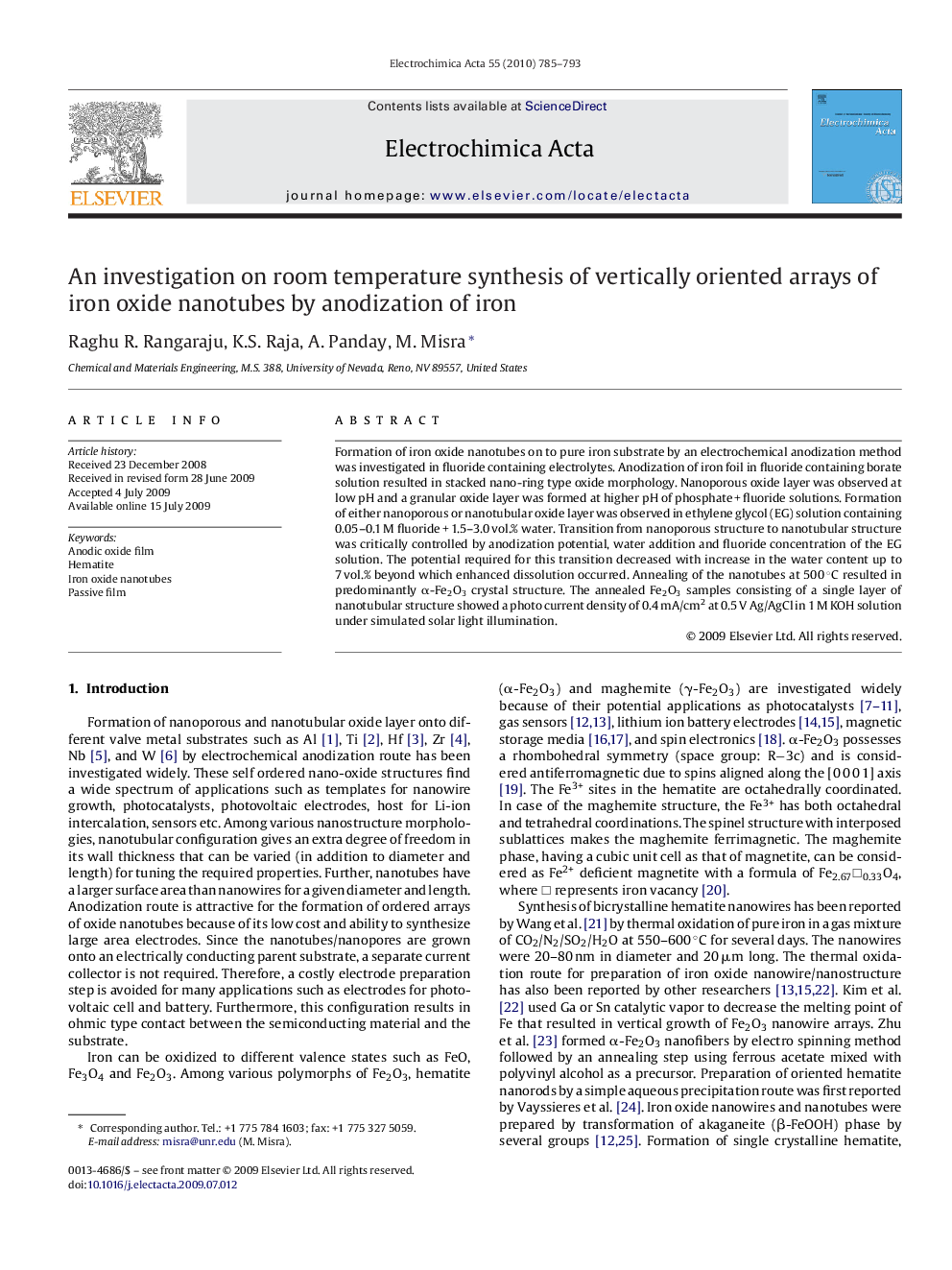| Article ID | Journal | Published Year | Pages | File Type |
|---|---|---|---|---|
| 191204 | Electrochimica Acta | 2010 | 9 Pages |
Formation of iron oxide nanotubes on to pure iron substrate by an electrochemical anodization method was investigated in fluoride containing electrolytes. Anodization of iron foil in fluoride containing borate solution resulted in stacked nano-ring type oxide morphology. Nanoporous oxide layer was observed at low pH and a granular oxide layer was formed at higher pH of phosphate + fluoride solutions. Formation of either nanoporous or nanotubular oxide layer was observed in ethylene glycol (EG) solution containing 0.05–0.1 M fluoride + 1.5–3.0 vol.% water. Transition from nanoporous structure to nanotubular structure was critically controlled by anodization potential, water addition and fluoride concentration of the EG solution. The potential required for this transition decreased with increase in the water content up to 7 vol.% beyond which enhanced dissolution occurred. Annealing of the nanotubes at 500 °C resulted in predominantly α-Fe2O3 crystal structure. The annealed Fe2O3 samples consisting of a single layer of nanotubular structure showed a photo current density of 0.4 mA/cm2 at 0.5 V Ag/AgCl in 1 M KOH solution under simulated solar light illumination.
